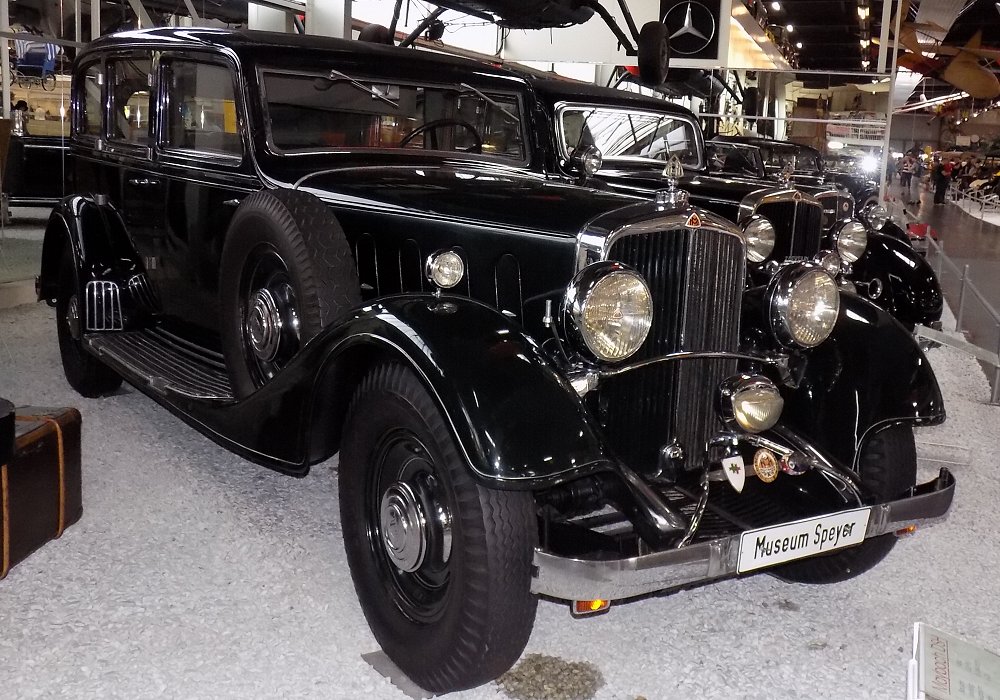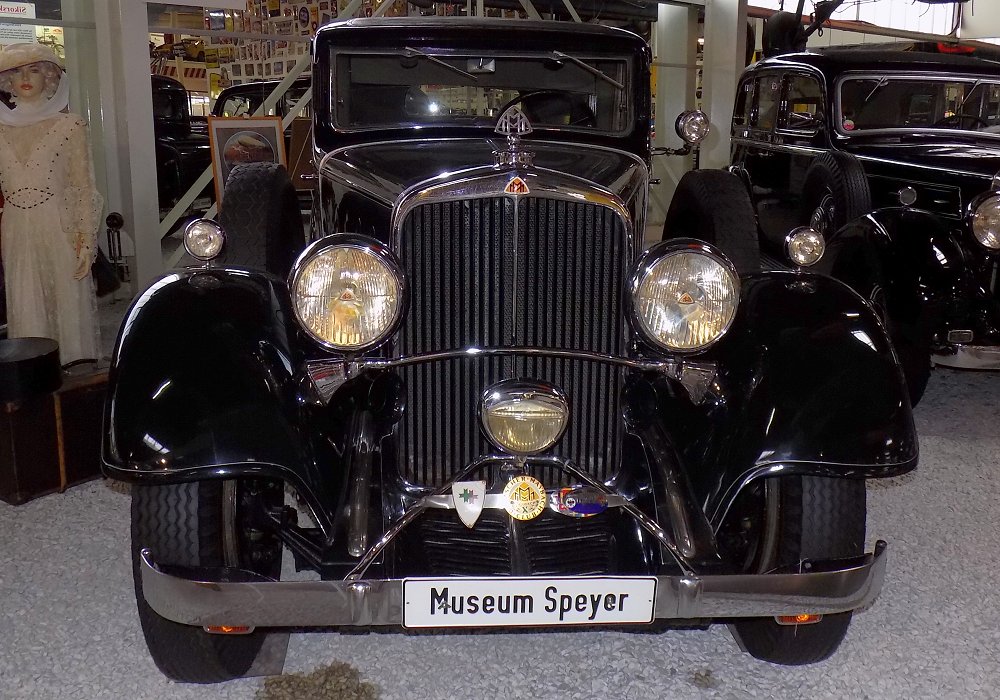Description
The Maybach DSH, introduced in 1930, was one of the most important transitional models in Maybach’s pre-war lineup. Positioned between the monumental W-series giants of the late 1920s and the technically advanced SW models that would follow later in the decade, the DSH represented a shift toward greater refinement, improved drivability and more modern proportions, while still retaining the engineering depth and bespoke luxury that defined the brand. It was a prestigious, meticulously built luxury car aimed at an elite clientele seeking supreme comfort and mechanical sophistication.
The DSH was powered by a 5.0-litre inline-six engine, an exquisitely engineered unit that delivered around 100–120 horsepower depending on the final tuning and carburetion. Although smaller than the massive 7-litre engines used in the W 5 and W 6 models, the DSH’s straight-six was more advanced, smoother in operation and better suited to the evolving tastes of the early 1930s, which favoured refinement over outright size. The engine’s broad torque curve made it ideal for moving heavy luxury coachwork, allowing the DSH to accelerate cleanly at low speeds and cruise quietly at higher ones. Maybach’s background in aviation engineering was clearly reflected in the engine’s balance, durability and precision.
One of the notable technical highlights of the DSH was its semi-automatic transmission system, a precursor to the fully developed Maybach Wandler gearboxes used later in the decade. The DSH’s gearbox reduced the effort required for shifting and contributed significantly to the car’s refined driving experience. While not yet a true torque-converter arrangement, the system allowed smoother transitions between gears, making the DSH easier to manage in both city traffic and long-distance touring.
The chassis was designed around a strong, heavy-duty ladder frame capable of supporting large, elaborate custom bodies. Suspension consisted of semi-elliptic leaf springs front and rear, tuned for comfort and stability rather than speed. The DSH provided a dignified, composed ride, well suited to chauffeur-driven service. Steering was slow but precise, reflecting the expectations of the period’s formal luxury cars. Braking was handled by large mechanical drums that offered strong performance for a vehicle of its size and era.
As with all Maybachs of the pre-war years, the DSH was not sold as a complete car but as a chassis destined for custom coachwork. Spohn of Ravensburg — Maybach’s preferred coachbuilder — produced many of the most notable bodies, including formal Pullman-Limousines, elegant cabriolets and refined four-door sedans. However, other elite German builders also contributed designs. Regardless of coachbuilder, each DSH was a bespoke creation, hand-crafted to the individual buyer’s specifications.
Interiors varied widely depending on the selected body, but all shared the exceptional craftsmanship for which Maybach was known. Cabins typically featured deep leather or high-grade cloth upholstery, polished hardwood veneers, finely machined metal fittings and thick carpets. Pullman-style bodies offered smoking sets, fold-out tables, vanity compartments, intercom systems and elaborate interior lighting. Even the more “modest” configurations were completed to a standard that matched or surpassed the finest European luxury marques of the era.
On the road, the DSH delivered the qualities expected of a top-tier chauffeur-driven luxury automobile. The straight-six performed with smooth, quiet authority, while the chassis provided stability and comfort over long distances. The semi-automatic transmission made progress more seamless than in many contemporary cars, and the overall refinement of the DSH earned it admiration from period reviewers. It was not designed for sporting prowess but rather for dignified, effortless travel — an area in which it excelled.
Production numbers for the DSH were very limited, as it was built exclusively for a small circle of wealthy clients during a difficult economic era. This scarcity, combined with its position as a bridge between Maybach’s early heavy luxury machines and its later technological innovations, has made surviving DSH examples highly sought after among collectors.
Today, the Maybach DSH is remembered as a refined, technically advanced and beautifully crafted luxury automobile that helped shape the brand’s direction during the early 1930s. With its smooth straight-six engine, semi-automatic transmission and superb bespoke coachwork, it remains an important and elegant piece of Maybach history — a testament to the marque’s dedication to engineering excellence and handcrafted luxury.


